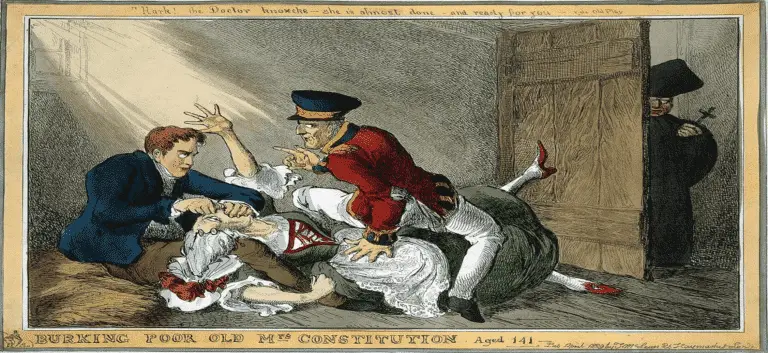The Body Snatcher’s Handbook
Body snatching needed no great skill. There was no training involved, you basically perfected your talent as you went along. There were certain aspects that needed to be followed of course, but there were no guidelines written on which ‘best practice’ to follow.
The basic rules were the same for most body snatchers. Don’t go out under a full moon, always use a wooden shovel to minimise any noise and where possible, adopt a bit of bribery so that the sexton could help with stealing the cadaver. Time was of the essence when digging up a dead body so any assistance would have been welcomed.
Every body snatcher had their own technique, perfected over time, either through trial and error or from necessity.
I’ve written about the basic rules that all body snatchers should follow in a different post and so this post covers your ‘Body Snatching 101’ if you like, told in the form of a ‘guide’, offering some light relief to a largely macabre topic.
Step 1. Choosing a Cadaver
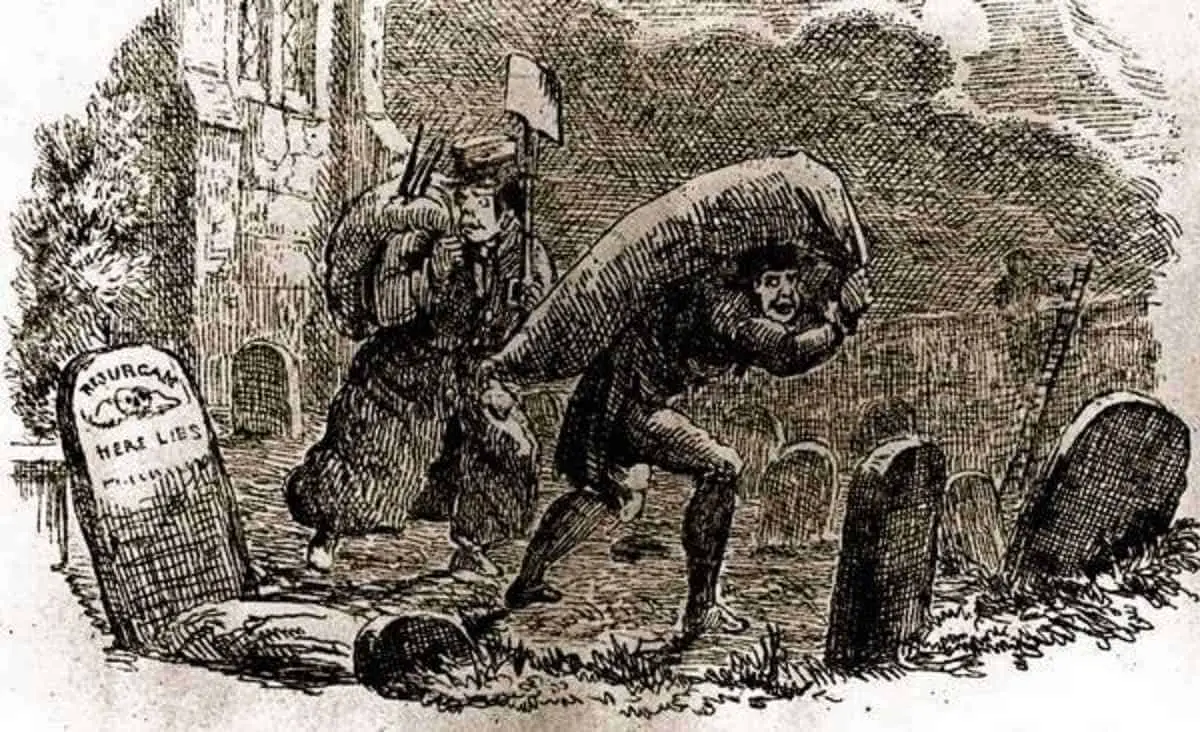
Let’s start with the most obvious. Choosing your cadaver.
Timing is everything. The fresher the cadaver, the better your chance of getting a good price from the anatomists.
The last thing any hardworking resurrectionist needs is to discover is that he’s dug up a half putrid corpse.
It’s not the end of the world if you do, however, the less decayed bits, usually, the extremities can be cut off if they’re not too far gone and the teeth can always be extracted for a separate sale. For this, you’ll need your bradawl, and please, try not to be squeamish.
“Finding a fresh corpse is perhaps the most fundamental aspect of body snatching”
Step 2. Getting a Little Help
Have you thought about how you’re going to find your cadaver? No, I thought not.
You could spend the time scouting out graveyards yourself of course, and some of you may still prefer to do this part of the job yourself, but why do the hard work when you can get someone else to do it for you.
A casual stroll through the churchyard whilst the sexton is digging the grave, or an amble past a funeral mid-service are just some of the simpler methods which can help to identify the location of your next target.
Tasks such as this can easily be carried out by a female accomplice and she’ll be able to get quite close to the funeral party if she goes, closer than most men would be able to anyway. She is a good resource, so please do make use of her.
If you’ve been fortunate enough to have seen the funeral, you may even have wangled a place among the mourners, you will probably have a general idea of how deep the body has been buried.
If you find it easier or have set your sights on a larger churchyard that you hope to make use of for some time, then you may wish to get the sexton on board with you.
They may grumble at first and you may find yourself in what could be termed as a ‘situation’ but everyone has their price that can usually help to swing things in your favour.
The seasons starting money you’ve received from your surgeon can help grease the palms of many a willing sexton if you perfect your bartering skills each dissecting season.
“Everyone has their price, and it shouldn’t take you too long to find theirs”
Of course, if you’ve got the church officials on board, then they can either remove the corpse for you when they’re backfilling the grave or simply replace the cadaver in the coffin with a suitable weight substitute and have you collect the corpse from one of their back rooms later that day.
Step 3. Body Snatching Prevention
Ah, the bain of your life. But, don’t be perturbed.
More and more churchyards are using anti body snatching devices such as iron cages which are designed to put you off and to be honest, I’d perhaps think twice about spending your time and energy extracting a corpse encased in an iron cage.
Take my advice and move on to the next loosely filled mound in the graveyard, you’ll thank me in the end.
It is perhaps a good idea to mention access at this point. Some churchyards have built a high wall around the site but these can always be scaled if you remember to bring a ladder with you. If not, one can be stolen from a nearby house. Remember to use your wits at all times.
Keep an eye out for grave markers left by the poorer members of the parish too. They like to pop the odd stone or stick on top of the grave in the hope that they will be able to tell if it has been tampered with.
This, however, acts as an excellent marker for you, pointing out exactly where a fresh burial has taken place. Just remember to put this back in the same position before you go.
And one last thing, it’s quite possible that there could be a watch placed in the churchyard. They’re getting more and more popular and more confident come to that and the last thing you want to happen is to spend the night in the parish lock-up. Look at what happened to Henry Gillies.
Step 4. The Extraction Method
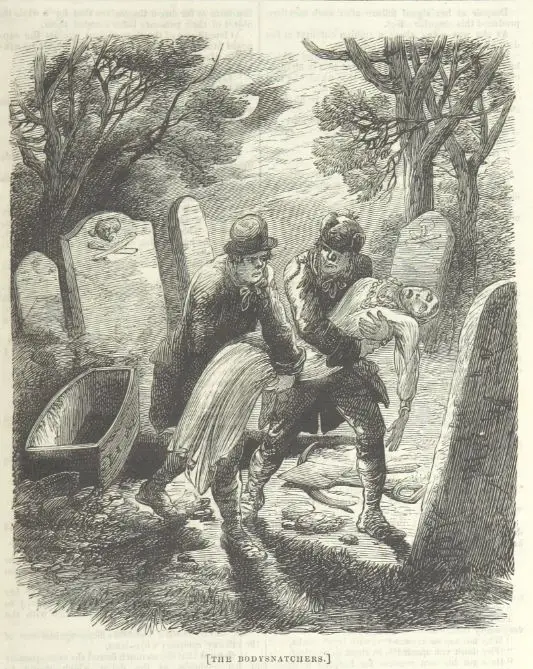
Don’t listen to the methods you’ll read in the newspapers suggesting that the whole coffin is dug up or that the way to get at the cadaver is to dig a tunnel.
You don’t have time for such fumbling methods and need to complete the task as quickly as possible.
Do the job right and you could be out of there in under an hour.
Place your sack on the grass next to the grave. This will catch any loose soil that falls, stopping it from marking the grass. Now locate the head end of the coffin. You’re aiming to drag the body out head first, so it’s important to dig at the right end!
Placing the soil onto the lower end of the coffin, the weight will act as a counterbalance and help to snap the lid later. Now, keep digging until you hear a thud.
Using either a crowbar or your purposely forged iron hooks, wrench the coffin lid open. Don’t forget to put a second sack on top of the coffin first to help deaden the noise of splintering wood.
Stand back and let the corpse gases escape, and with the coffin opened, lift the broken lid off. It’s time to get down to business.
Slip your hooks under the corpses armpits of the corpse, or if you’re using a rope, tie this around the neck, or under the arms if you can stomach getting that close.
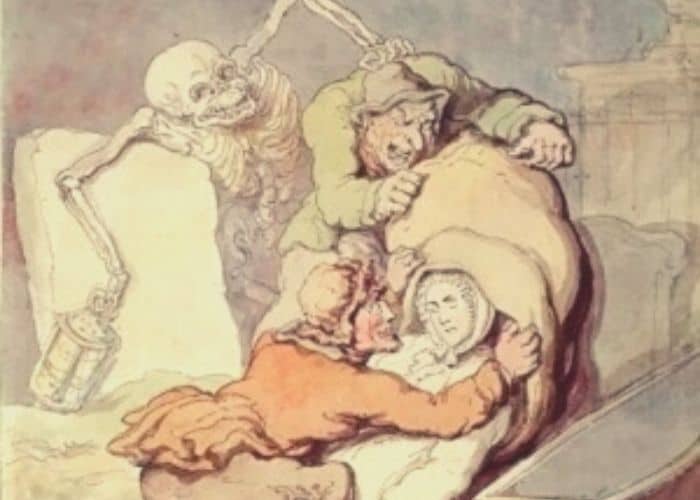
Make sure you get a firm hold on the cadaver before you start pulling, less you’ll only have to start the whole process again.
And start tugging. This may take some effort and you may need to work in shifts. Short sharp tugs are more effective than one long pull, so try to build up a little momentum as you’re working.
Those of you less intoxicated may have to take the turn of some of your friends, but as long as the cadaver comes out whole, you can be compensated with a few extra shillings come divvying up time.
Once out of the grave, you need to strip the corpse of any grave clothes, jewellery or other adornments so that if the cadaver is found and later traced to you, you cannot be accused of theft.
If you are caught with a body or two, unless you have murdered the ‘thing’ to get it, then you are probably looking at a short prison sentence, with or without hard labour, in addition to a fine. Something which I’m sure you’ll cope with as it won’t be for that long.
When you’ve stripped your cadaver, put or throw the corpse to the side whilst you refill the grave.
It’s almost mandatory to throw the grave clothes back into the coffin before you begin backfilling. The last thing you want to do is to leave them strewn about the churchyard or be accused of theft like Thomas Goslin was if you’re caught red-handed on your way to the anatomists.
You may want to pause here for a minute before you pack up the corpse, to knock out the teeth. This can be done either with a pair of pincers or with the handle of your spade. This latter method, however, does have the disadvantage of damaging the jaw of the cadaver which may reflect on the purchase price.
When you sell the teeth, any monetary losses can always be made up with the modern craze for human teeth, and you shouldn’t have too much trouble finding a buyer.
Step 5. And Finally…

You’re nearly done so it’s time to turn your attention back to the cadaver. Lift it up.
You’ll probably have to get quite close to your exhumed corpse at this point. If you have any gin or brandy with you, now would be a good time to take a swig.
Yes, you are trying to get it into the sack you brought with you.
Rigour Mortis has hopefully worn off by the time you’ve dug up the corpse, so thrusting it into a sack shouldn’t be too much trouble.
If you do hear any snapping, don’t worry too much as the surgeons will mainly be interested in the fleshier parts of the body. Once you have the cadaver secured in the sack and have checked the area for signs of disturbance, it’s time to leave.
Don’t forget your tools, you’ll need them for your next job.

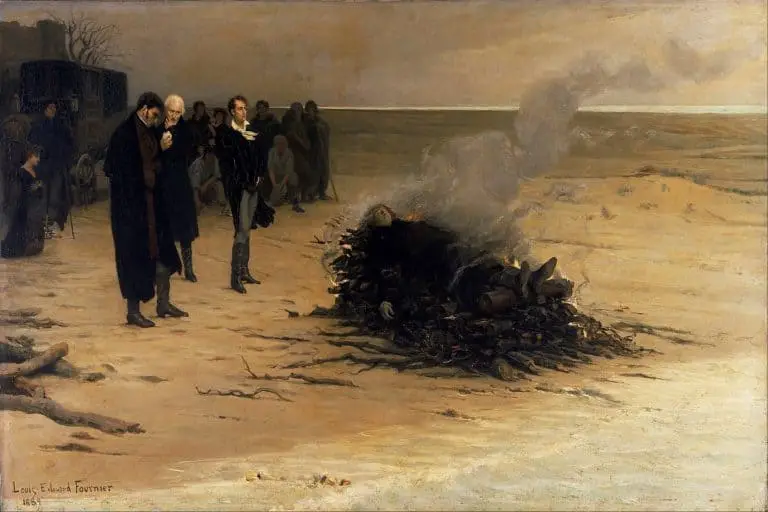
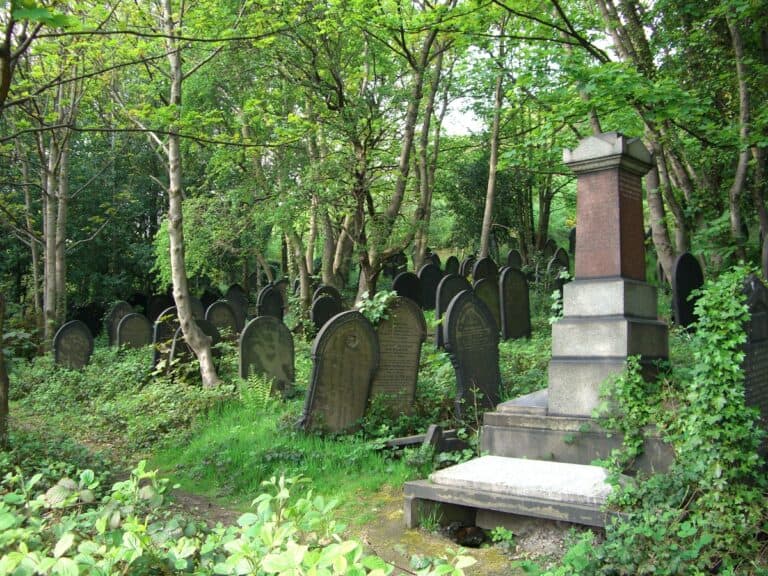
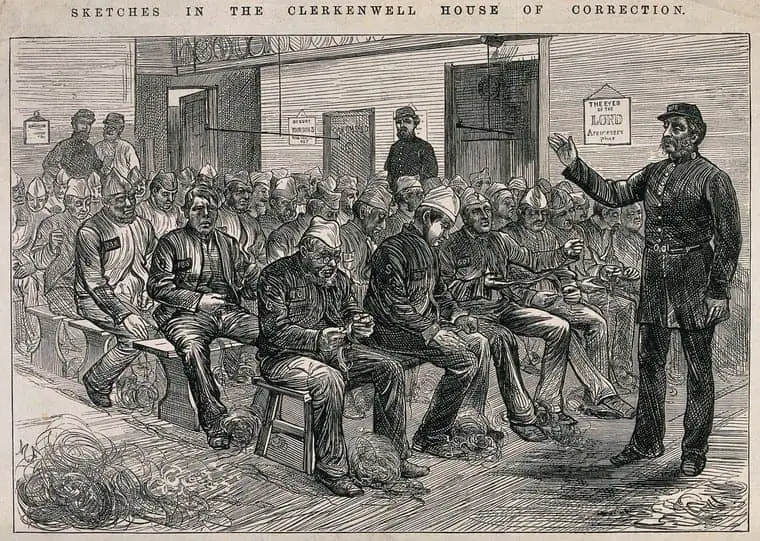
![‘[A] Miraculous Circumstance’](https://mymacabreroadtrip.com/wp-content/uploads/2020/04/Rawlinson-Resurrection-Men-via-Wellcome-Library-Diggingup1800-768x934.jpg)
